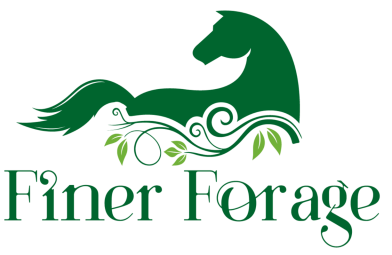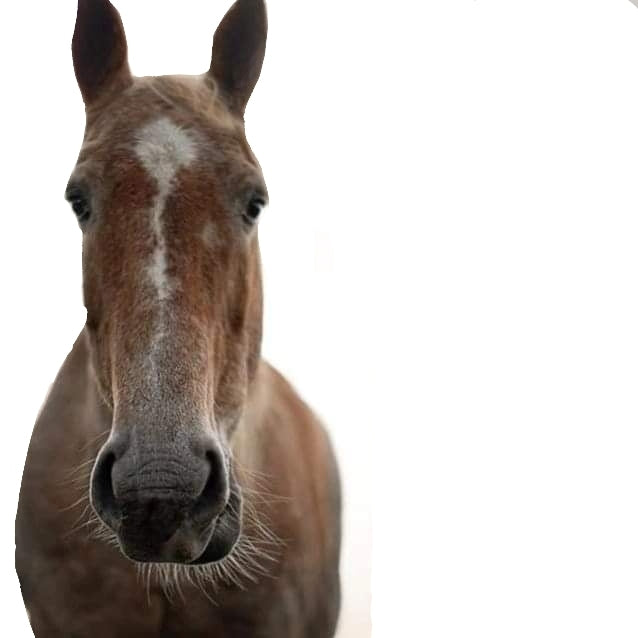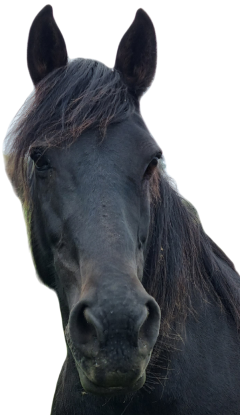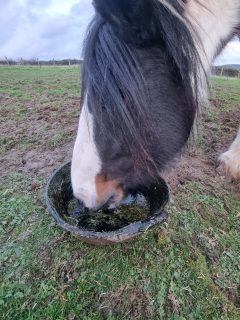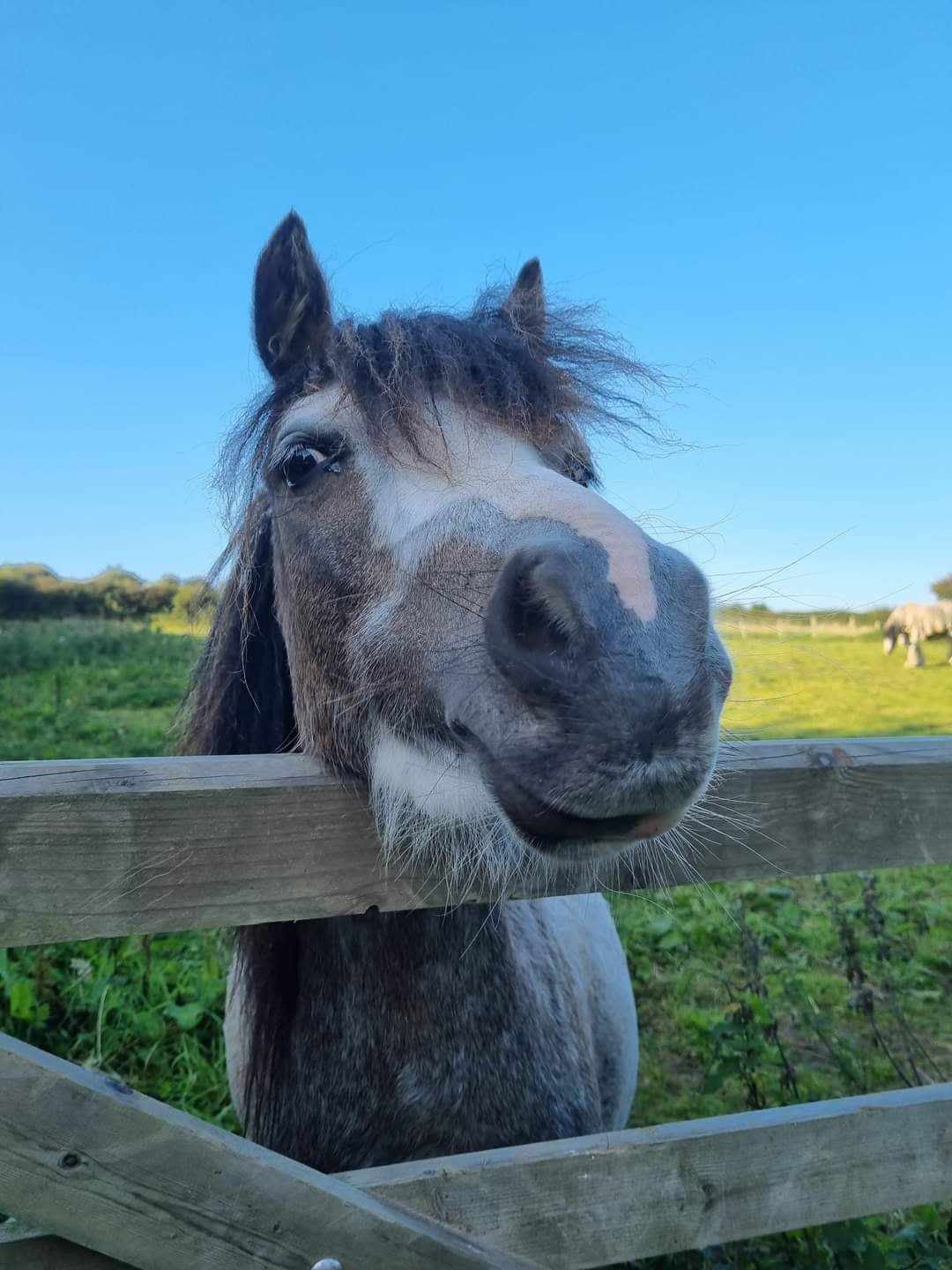
Ingredients: The little things make a big difference
At Finer Forage, we are passionate about feeding horses in a species appropriate way, but what does that actually mean? Well, for us, it is about feeding horses in a way that the equine species has evolved to eat; so, in brief, plants. Just plants: grasses, shrubs, trees, hedgerows, flowers, herbs, berries etc.
We believe that feeding in this way provides your horse with everything it needs for optimal health and performance, as it enables the horse’s body to process its nutrition in the way that nature intended. It sounds obvious, but it’s actually quite rare that the domestic horse is fed in this way in these modern times.
Most commercial horse feeds contain some sort of byproducts; whether it’s wheatfeed, oatfeed, soya hulls, molasses, beet pulp or whatever. On the face of it, the nutrition analysis of these ingredients look to be OK for the horse: they are usually high fibre, and low sugar and starch, but they are often lacking in other useful nutrients too.
Why do byproducts end up in our horses feeds to start with? Well, the human food production industry is huge, with convenience foods making up the majority of the developed world’s diet. These convenience foods produce a lot of waste that is low in nutritional value but can add bulk to other products, adding financial value. If this waste can bring in income for the food companies, why wouldn’t they try and do that? And so it begins to make sense that you have large confectionary companies buying up horse food brands…
The type of human convenience food has changed hugely in the last half a century or so too, which is evidenced in the demographics of the nation - 7% of adults were obese in 1980, this rose to 20% in the twenty years to 2000, and 26% by 2020. This weight increase in the human population is mirrored in the equine population; overweight horses is a welfare focus for many equine charities in recent years. Obesity in horses can cause several diseases and make other conditions worse, including laminitis, PPID, EMS, arthritis, COPD and CPL to name but a few.
So, let’s dig down into a few examples of byproducts to explore why these might be problematic in the horse.
Soya Hulls
Soya Hulls are the outer husks of the soya bean and are what’s left after the middle bit has been used for making soy milk, soya protein and tofu, etc for the human food industry. The outer husks are dried and ground down, and because they are ground, they ferment rapidly in the hindgut of the horse. This is often touted as being a good thing, a super-fibre even, yet a study by Laar and Engels back in 1999 attempted to replicate a microbial digestion of soya hulls, to better mimic what actually happens inside an animal reliant on fermentation for digestion, which led to the conclusion that the sugar availability through the degradation and fermentation process produces around 5 times the sugar content of an average hay - yielding 50%! The standard lab analysis however, using standardised wet chemistry techniques outside of a live animal, gives a number of just 2% sugar. That’s quite a difference!
GM soya and glyphosate: You may have come across people's aversion to genetically modified soya. The modification is generally to make the plant 'roundup ready' - that is, to make it able to withstand high amounts of glyphosate application, so that high amounts can be applied to crops, to kill the surrounding 'weeds' without ‘damaging ‘ the crop. This would logically lead to the question of how much glyphosate/roundup residue is retained, given there are large amounts applied to the crop. Curha et al 2015 found glyphosate residues in soybean meal animal feeds and identified negative effects to growth reproduction and offspring numbers as a result, even when residues were within the permitted levels. From a horse perspective, glyphosate does alter the hindgut: it has antibiotic properties, so it will reduce the bacterial diversity so crucial to a healthy equine gut.
Tannins - Soya bean hulls are high in tannins (they contain a higher levels than found in acorn hulls). Tannins inhibit trypsin production and reduce absorption of the essential amino acids methionine and cysteine, amongst others.
Alfalfa
Alfalfa is a legume, popularly fed as a hay in the US, but more often as a chopped forage/chaff or as pressed pellets in the UK. It has a low sugar and starch content and high fibre content, and a reasonably high protein content, so by traditional lab analysis numbers, it looks like a really good option on paper, until you dig a little deeper…
Alfalfa is high in nitrogen, or crude protein (not quality protein) which can be especially problematic for the liver. Excess nitrogen can also cause issues with calcium and magnesium uptake, it can disrupt normal endocrine function, and lead to inflammation, which becomes particularly visible in the hooves. This is why your barefoot trimmer might suggest you remove alfalfa from your horses diet, if you keep your horse barefoot, and why it is not recommended for horses with CPL.
Alfalfa is also proven to increase acidity in the hindgut, because propionate is the dominant volatile fatty acid which is produced upon fermentation of alfalfa in the hindgut, and it is the most acidic of all VFA’s produced. This pH drop leads to microbial disturbances, as some microbes can't tolerate excessively acidic environments and will die-off, leading to a cascade of resulting gastrointestinal disturbance and systemic inflammation.
Alfalfa is a recognised accumulator plant. In other words, it's one of those plants that uptakes toxins, so it can accumulate heavy metals if they're present in the soil where it is grown.
Alfalfa also has the potential to upregulate the immune response - so it's a definite no-no for horses with sweet itch, allergies, or any autoimmune issues. It also has a high phytoestrogen content, so it can disrupt normal endocrine function and responses.
Alfalfa has been shown to increase photosensitivity in humans, so it wouldn't be helpful to any pink noses in the summer!
Finally, alfalfa has a very imbalanced calcium to phosphorus ratio, so it should not be fed in considerable amounts to youngsters, as it risks developmental orthopaedic disease (incorrect bone formation in youngsters) if the Ca:P ratio is not addressed elsewhere in the diet.
Linseed
Linseed comes in many forms, some are byproducts, many are not: linseed expeller (byproduct), full fat linseed, linseed meal (byproduct), micronised linseed, linseed oil, and linseed crumble (who knows?). It looks to be a good source of non-starch energy on paper: according to standard lab tests, it has good omega 3 levels and there is some evidence that it can help with reducing inflammation.
Linseed is toxic to horses in its raw form however due to antinutritional factors, specifically cyanogenic glycosides which are goitrogenic, meaning linseed should always be properly cooked to ensure that the cyanogenic glycosides are destroyed prior to feeding to any equine (Chandra 2010).
Linseed also contains phytoestrogens, amino acids, minerals, and flavonoids (Williams & Lamprecht 2008). Linseed has various demonstrable pharmacological properties in laboratory studies, with one mouse study finding analgesic and antipyretic activity comparable to aspirin, in addition to anti-inflammatory and antihistamine properties (Kaithwas et al., 2011).
The phytoestrogen content mean that it is unlikely to be suitable for horses with any endocrine dysfunction, for breeding mares and young stock, or any horse with any hormonal imbalance.
There are further issues with linseed which mean that some, or even many, horses appear to be intolerant of it. Anecdotally, a high percentage of equines exhibit negative reactions to Linseed, from behavioural changes to poor hoof growth, digestive disruption and even increases in aggression. At this time we cannot find scientific studies to support these observations by owners and equine professionals, despite widespread anecdotal reports.
In the foregut, linseed oil is claimed to provide gastroprotection from piroxicam-induced and aspirin-induced gastric ulceration in rats, with comparable results to ranitidine, both demonstrating 100% efficacy (Ibrahim et al., 2019, Mohamed 2014).
In rat and guinea pig trials linseed has been reported to provide effective gastroprotection against various methods of gastric ulcer inducement: aspirin, indomethacin, ethanol, serotonin, reserpine, histamine, stress and pylorus ligation, with linseed being superior to the standard treatment misoprostol in the case of aspirin-induced gastric ulcers, with 81.08% and 78.98% efficacy respectively (Kaithwas 2010).
In the hindgut however, a less favourable picture emerges, Zarepoor et al., 2014 found that supplementing the diets of mice subjected to laboratory induced colitis with linseed, resulted in exacerbated colonic inflammation, an increase in colonic injury and disease activity index, increase in apoptosis, histological damage, increased hepatic cholesterol levels and increased serum cytokines (IL-6, IFNγ, and IL-1β). This study may indicate that linseed is not a suitable feed for mammals with an already damaged colon, or perhaps any damaged gastro-intestinal epithelium, as is the case with much of the horse population. (Between 65% and 100% of horses have gastric ulcers, according to the research – far less is known about the hindgut as it is impossible to study in the live horse in an ethical way.)
Wheatfeed & Oatfeed
Wheatfeed and Oatfeed are by-products of the flour milling process. These are not crushed up wheat or oats, rather, they are the waste products composed of the outer husks of the grain - the bits that are left over after the nice bits of the grain have been used for human food production. Much like soya hulls, these outer husks are high in fibre and low in sugar and starch, but they are also really low in any other useful nutrients such as vitamins and minerals.
As with soya hulls, the outer husks accumulate high levels of glyphosate, which is used to desiccate the crops at harvest by 90% of farmers – drying the crops more quickly, so that they can be harvested more rapidly, and therefore increasing efficiency and reducing the risk of spoilage due to ad verse weather. Glyphosate has been shown to affect the hindgut microbiome, animal fertility and inflammation, amongst other biological systems. In animal feed, the permitted levels are somewhere around 5 million times that allowed in human drinking water!
Along with the glyphosate, most oat crops are treated twice with herbicide, twice with fungicide, once with insecticide and once with growth regulators. Each wheat crop is treated three times with herbicide, three times with fungicide, twice with insecticide and once with growth regulators. Yummy!
Wheatfeed, oatfeed and soya hulls are all ground down into tiny particles before being reformed into pellets or nuts. These small particles travel quickly through the gut and ferment quickly, then fool the caecum into thinking the fibres have broken down more than they actually have. This expedites the selective retention process, meaning undigested particles leave the caecum before they're really ready to, which affects the microbial interactions in the final sections of the hindgut and can lead to dysbiosis. There is also the question of whether this rapid fermentation also yields higher sugars as they are broken down microbially in the gut, as with soya hulls.
Nutritionally Improved Straw (NIS)
Nutritional Improvement sounds great, doesn’t it? But what exactly is the improvement to the nutrition of said straw? The answer might surprise you: it’s the application of Sodium Hydroxide (aka Lye or Caustic soda) which is commonly used to clean drains, as an oven cleaner, and to make soaps and paper.
The theory is that the Sodium Hydroxide breaks down the lignin in the straw, making the straw more digestible and the nutrients locked within the lignin fibres easier to access and digest, yielding more nutrition. In beef cattle farming systems, it is a cost-effective way to add weight to their stock. But for horses, who rely on a diverse population of hindgut microbes to ferment their food in the hindgut, any benefits are doubtful, but there is no research that I know if that has examined the effect of feeding caustic soda washed straw to horses, and how that might affect their sensitive stomach or the delicate microbial environment of the hindgut.
Molasses
Molasses is a byproduct of the confectionary industry, it has little nutritional value but is commonly used to bind byproduct powders, to minimise dust, and to make otherwise unpalatable ingredients taste sweet and delicious. It is 94% sugar!
Sugarbeet pulp
Despite the name, sugarbeet pulp is in fact very low in sugar, because sugar beet pulp consists of what remains after the sugar has been extracted from the beets. It is high in pectin and other digestible fibres, because of this, it is often called a super fibre and has even been referred to as a probiotic. Whilst it is true that it does increase some gut bacteria, it only increasing the numbers of specific pectin-loving microbes significantly, which don’t normally come under the ‘good bacteria’ banner.
Sugarbeet also contains on average 14g of sand per 1kg, due to the growing and harvesting processes. A study in Liverpool university found that feeding any type of sugarbeet was associated with a higher risk of colic, particularly torsions of the colon.
Obviously, we are not saying that these, or any ingredients, are “evil”. They aren’t! They are just not what we would choose to feed our horses, and so we don’t use them in our products. As owners, we are responsible for making the decisions that affect our equine’s health day in and day out. They can’t read the research, and they don’t make the decisions. When we feed in a species appropriate manner, we feed for the health and wellbeing of our equines, naturally. And when you feed Finer Forage, you know you’re choosing Naturally Better Horsefood.
